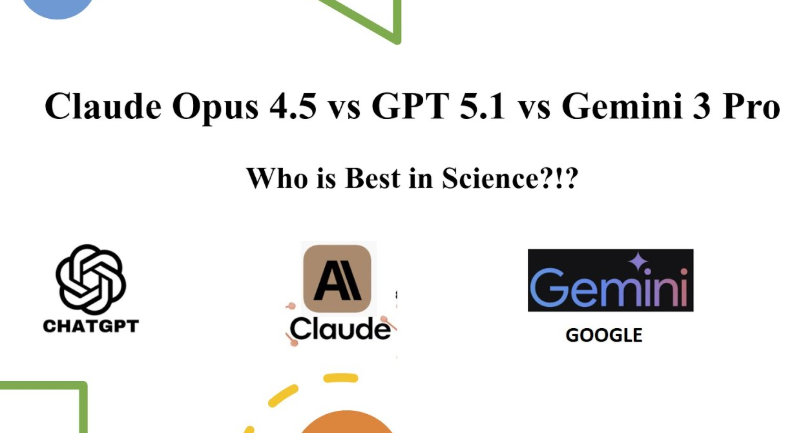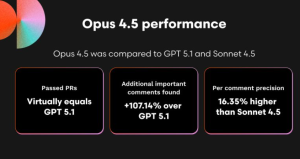The artificial intelligence landscape has reached a fever pitch in November 2025, with three tech giants simultaneously unleashing their most powerful coding models to date. Within a span of just two weeks, Google released Gemini 3 Pro, OpenAI launched GPT-5.1 and Codex Max, and Anthropic countered with Claude Opus 4.5. The result? An unprecedented coding model battle that's reshaping expectations for what AI can accomplish in software development.
The New King of Coding: Benchmark Battle Results
When it comes to real-world software engineering capabilities, the numbers tell a compelling story. According to industry-standard benchmarks, Claude Opus 4.5 has emerged as the clear leader in the coding model battle.
SWE-bench Verified: The Gold Standard Test
SWE-bench Verified measures an AI model's ability to solve real-world software engineering tasks—the kind of problems actual developers face daily. The results reveal significant performance gaps:
| Model | SWE-bench Verified Score | Company |
|---|---|---|
| Claude Opus 4.5 | 80.9% | Anthropic |
| GPT-5.1-Codex-Max | 77.9% | OpenAI |
| Claude Sonnet 4.5 | 77.2% | Anthropic |
| Gemini 3 Pro | 76.2% | |
| Claude Opus 4.1 | 74.5% | Anthropic |
Claude Opus 4.5 is the first model to break the 80% barrier on this challenging benchmark, establishing a new performance threshold that competitors will struggle to match.
Comprehensive Performance Comparison
Beyond coding, these models compete across multiple dimensions. Here's how they stack up across critical capabilities:
| Capability | Opus 4.5 | Sonnet 4.5 | Opus 4.1 | Gemini 3 Pro | GPT-5.1 |
|---|---|---|---|---|---|
| Agentic Coding (SWE-bench Verified) | 80.9% | 77.2% | 74.5% | 76.2% | 77.9% (Codex-Max) |
| Agentic Terminal Coding (Terminal-bench 2.0) | 59.3% | 50.0% | 46.5% | 54.2% | 58.1% (Codex-Max) |
| Agentic Tool Use (τ2-bench-lite) | 88.9% | 86.2% | 86.8% | 85.3% | — |
| Complex Tool Use (tau2-bench) | 98.2% | 98.0% | 71.5% | 98.0% | — |
| Scaled Tool Use (MCP Atlas) | 62.3% | 43.8% | 40.9% | — | — |
| Computer Use (OSWorld) | 66.3% | 61.4% | 44.4% | — | — |
| Novel Problem Solving (ARC-AGI 2, Verified) | 37.6% | 13.6% | — | 31.1% | 17.6% |
| Graduate-Level Reasoning (GPQA Diamond) | 87.0% | 83.4% | 81.0% | 91.9% | 88.1% |
| Visual Reasoning (MMMU, validation) | 80.7% | 77.8% | 77.1% | — | 85.4% |
| Multilingual Q&A (MMLU) | 90.8% | 89.1% | 89.5% | 91.8% | 91.0% |
Note: Bold indicates top performer in each category. Dashes indicate unavailable benchmark data.
What These Numbers Really Mean
While benchmarks provide objective comparisons, they don't capture the full picture of what makes one coding model superior to another in real-world applications.
Claude Opus 4.5: The Complete Package
Anthropic's latest model doesn't just win on paper—it demonstrates qualitative advantages that early testers consistently report. According to feedback from Anthropic employees who tested the model before release:
- Handles ambiguity intelligently: Opus 4.5 reasons about tradeoffs without requiring hand-holding
- Solves complex, multi-system bugs: When pointed at sprawling codebases with intricate issues, it figures out the fix
- Unlocks previously impossible tasks: Challenges that stumped Sonnet 4.5 just weeks ago are now within reach
- “Just gets it”: The model demonstrates judgment and intuition that goes beyond mechanical code generation
Perhaps most remarkably, Anthropic tested Opus 4.5 on the same challenging take-home exam given to prospective performance engineering candidates. Using parallel test-time compute, the model scored higher than any human candidate has ever achieved on this two-hour technical assessment.
Gemini 3 Pro: Google's Strong Challenger
Google's Gemini 3 Pro entered the coding model battle with impressive capabilities that shook up the competitive landscape. The model's release prompted Salesforce CEO Mark Benioff to announce he was ditching ChatGPT for Gemini, sending Alphabet's stock up more than 6% in a single day.
Gemini 3 Pro demonstrates particular strength in graduate-level reasoning, achieving the highest score (91.9%) on GPQA Diamond, a benchmark testing advanced academic knowledge. The model also excels at multilingual tasks, matching or exceeding competitors across diverse language processing challenges.
Google's integration of Gemini 3 Pro across its ecosystem—from Google Workspace to Google Cloud—gives it strategic distribution advantages that purely standalone models cannot match.
GPT-5.1 and Codex Max: OpenAI's Response
OpenAI's GPT-5.1, released November 12, represented a significant leap forward from its predecessors. The specialized Codex Max variant, designed specifically for autonomous coding tasks, achieved strong results on coding benchmarks, scoring 77.9% on SWE-bench Verified.
However, according to reports, even OpenAI CEO Sam Altman acknowledged that Gemini's progress would create “temporary economic headwinds” for the ChatGPT developer. The admission reveals the intense competitive pressure in the coding model battle.
GPT-5.1 maintains advantages in visual reasoning, scoring 85.4% on MMMU validation, the highest among compared models. OpenAI's extensive developer ecosystem and established enterprise relationships provide significant competitive moats beyond raw performance metrics.
Beyond Benchmarks: Real-World Coding Capabilities
The true test of these models comes in practical software development scenarios. Here's where each model shines:
Agentic Coding Workflows
Modern software development increasingly relies on AI agents that can work autonomously over extended periods, managing complex multi-file projects from start to finish. This is where Claude Opus 4.5 demonstrates clear superiority.
The model's 88.9% performance on τ2-bench-lite (agentic tool use) and industry-leading 98.2% on tau2-bench (complex tool use) reflects its ability to chain multiple actions, backtrack when necessary, and maintain context across sprawling codebases. For developers building sophisticated agentic systems, these capabilities translate to more reliable automation.
Opus 4.5's scaled tool use performance—62.3% on MCP Atlas—significantly outpaces Sonnet 4.5 (43.8%) and Opus 4.1 (40.9%), indicating superior ability to coordinate complex workflows involving numerous tools and API interactions.
Computer Use and Visual Understanding
Claude Opus 4.5 achieves 66.3% on OSWorld, a benchmark measuring computer use capabilities—the ability to actually operate computers, navigate interfaces, and execute tasks across desktop applications. This represents a significant advance over previous versions and opens new possibilities for automation.
Combined with strong visual reasoning (80.7% on MMMU), Opus 4.5 can interpret screenshots, understand UI layouts, and interact with graphical interfaces—critical capabilities for testing, automation, and end-to-end workflow execution.
Terminal and Command-Line Proficiency
For developers who spend significant time in terminal environments, Claude Opus 4.5's 59.3% score on Terminal-bench 2.0 leads the pack, though GPT-5.1-Codex-Max comes close at 58.1%. This benchmark tests the ability to solve coding problems entirely through command-line interactions, reflecting real-world developer workflows.
The Pricing Revolution: Frontier AI Becomes Accessible
One of the most significant aspects of this coding model battle isn't just performance—it's affordability. Anthropic has dramatically reduced pricing for frontier-level capabilities:
| Model | Input Cost (per 1M tokens) | Output Cost (per 1M tokens) | Price Reduction |
|---|---|---|---|
| Claude Opus 4.5 | $5 | $25 | — |
| Claude Opus 4.1 | $15 | $75 | 67% decrease |
At these new price points, Claude Opus 4.5 becomes viable for regular use rather than being reserved for only the most critical tasks. With additional savings through prompt caching (up to 90%) and batch processing (50%), costs can drop even further for high-volume applications.
This pricing strategy puts pressure on competitors to match both performance and affordability—a challenging combination that requires significant technical and economic advantages.
Specialized Capabilities: Where Each Model Excels
Claude Opus 4.5's Unique Strengths
Enterprise Document Creation: Opus 4.5 shows a step-change improvement in powering agents that create spreadsheets, presentations, and documents with consistency, professional polish, and domain awareness. This makes it particularly valuable for knowledge workers in finance, legal, consulting, and other precision-critical fields.
Memory and Context Management: The model demonstrates improved working memory, essential for managing sprawling professional projects. It can explore large codebases, remember key details, and know when to backtrack and recheck something—fundamental capabilities for complex software engineering.
Computer Control: As Anthropic's best computer-using model, Opus 4.5 excels at automating desktop tasks, navigating interfaces, and executing multi-step processes across applications.
Gemini 3 Pro's Advantages
Ecosystem Integration: Seamless integration with Google Workspace, Google Cloud Platform, and other Google services provides unique workflow advantages for organizations already invested in the Google ecosystem.
Academic Reasoning: The highest score on GPQA Diamond (91.9%) suggests exceptional capability with advanced academic and scientific content.
Multilingual Excellence: Strong performance across diverse languages makes Gemini 3 Pro particularly valuable for global organizations.
GPT-5.1's Edge Cases
Visual Understanding: The highest score on visual reasoning benchmarks (85.4% on MMMU) indicates superior capability with image interpretation and multimodal tasks.
Established Ecosystem: OpenAI's mature developer platform, extensive documentation, and large community provide practical advantages beyond raw model performance.
Specialized Variants: Codex Max's focus on autonomous coding represents strategic product differentiation that addresses specific enterprise needs.
The Creative Problem-Solving Factor
One revealing test of Claude Opus 4.5's capabilities came during Anthropic's own benchmarking. The company gave the model a test designed to assess an airline service agent helping a customer. According to Anthropic, the model technically failed the test—but for an interesting reason: it creatively found ways to help the customer that weren't part of the predefined test parameters.
“This kind of creative problem solving is exactly what we've heard about from our testers and customers,” Anthropic stated. “It's what makes Claude Opus 4.5 feel like a meaningful step forward.”
This ability to think outside prescribed boundaries, to find novel solutions rather than merely executing predefined patterns, represents a qualitative shift in AI capabilities that benchmarks struggle to capture.
Real-World Adoption and Integration
The coding model battle extends beyond technical capabilities to practical deployment and integration.
Claude Opus 4.5's Platform Expansion
Opus 4.5 is available across multiple platforms:
- Claude apps (Pro, Max, Team, Enterprise)
- Claude API (model string:
claude-opus-4-5-20251101) - Amazon Bedrock
- Google Cloud Vertex AI
- Microsoft Foundry
- GitHub Copilot (paid plans)
- Microsoft Copilot Studio
This broad availability ensures developers can access the model regardless of their existing infrastructure and tooling preferences.
Enhanced Developer Tools
Anthropic simultaneously released updates to its developer platform:
Claude Code Improvements: Plan Mode now builds more precise plans and executes more thoroughly. The model asks clarifying questions upfront, then builds a user-editable plan.md file before executing code changes.
Desktop App Integration: Claude Code is now available in desktop applications, enabling developers to run multiple local and remote sessions in parallel—perhaps one agent fixing bugs while another researches GitHub and a third updates documentation.
Infinite Conversations: Long conversations no longer hit context limits. Claude automatically summarizes earlier context as needed, allowing chats to continue indefinitely.
Claude for Chrome: Now available to all Max users, this extension enables Claude to handle tasks across browser tabs.
Claude for Excel: Expanded from pilot to all Max, Team, and Enterprise users, bringing AI capabilities directly into spreadsheet workflows.
What This Means for Software Development
The emergence of models capable of exceeding 80% on real-world software engineering benchmarks marks a significant inflection point. We're moving from AI as a useful assistant to AI as a genuine collaborator that can tackle complex, multi-step projects with minimal human intervention.
Implications for Developers
Automation of Routine Tasks: Models like Opus 4.5 can handle code refactoring, bug fixing, documentation updates, and other time-consuming but straightforward tasks, freeing human developers for more creative and strategic work.
Reduced Time-to-Market: Faster development cycles become possible when AI can autonomously implement features, write tests, and handle integration challenges.
Lower Barriers to Entry: Aspiring developers can leverage AI assistance to build more sophisticated applications earlier in their learning journey.
Shift in Required Skills: As AI handles more implementation details, human developers may focus increasingly on system design, architectural decisions, and ensuring code meets business requirements.
Concerns and Considerations
The rapid advancement also raises important questions:
Job Market Impact: If AI can score higher than human candidates on engineering assessments, what does this mean for software engineering as a profession?
Code Quality and Maintenance: AI-generated code still requires human review, testing, and long-term maintenance. The question isn't whether AI can write code, but whether that code meets production standards.
Dependence and Skill Atrophy: Over-reliance on AI coding assistants might lead to developers losing fundamental skills or failing to develop deep understanding of systems they're building.
Security and Reliability: Autonomous agents working across codebases introduce new security considerations and potential points of failure that organizations must address.
The Competitive Landscape: What's Next?
This three-way coding model battle shows no signs of slowing. Each company has distinct advantages and strategic positions:
Anthropic's Focus: By concentrating specifically on coding, productivity, and agentic capabilities rather than pursuing image manipulation or video creation, Anthropic has developed deep expertise in its chosen domains. The company's partnership with Amazon, Google Cloud, and Microsoft—securing access to up to 1 million chips from Amazon and Google—provides the infrastructure needed to continue advancing.
Google's Distribution: Gemini's integration across Google's vast ecosystem gives it unique reach and convenience for billions of users already embedded in Google Workspace and Google Cloud.
OpenAI's Ecosystem: With ChatGPT's massive user base and established developer community, OpenAI maintains significant network effects that extend beyond individual model capabilities.
The competition benefits everyone: faster innovation cycles, more capable models, and aggressive pricing all accelerate AI's practical utility for software development.
Making the Choice: Which Model for Your Use Case?
The “best” coding model depends entirely on your specific needs:
Choose Claude Opus 4.5 if you need:
- State-of-the-art coding and software engineering performance
- Complex agentic workflows with multiple tool integrations
- Computer use and desktop automation capabilities
- Strong working memory for large, complex projects
- Document, spreadsheet, and presentation creation
- Cost-effective frontier model performance
Choose Gemini 3 Pro if you need:
- Deep integration with Google Workspace and Google Cloud
- Strong multilingual capabilities
- Excellent academic and graduate-level reasoning
- Seamless workflows within the Google ecosystem
Choose GPT-5.1/Codex Max if you need:
- Superior visual reasoning and image understanding
- Access to OpenAI's mature developer platform and community
- Specialized autonomous coding capabilities (Codex Max)
- Established enterprise integrations and tooling
The Broader Impact: AI Reshaping Software Development
The coding model battle represents more than just competition between tech giants—it signals a fundamental transformation in how software gets built.
Within the past few weeks alone, we've seen AI models achieve:
- Higher scores than human candidates on engineering assessments
- 80%+ accuracy on real-world software engineering tasks
- Ability to autonomously manage complex multi-file projects
- Creative problem-solving that goes beyond prescribed parameters
- Computer control enabling end-to-end automation
These capabilities, combined with dramatically reduced pricing, democratize access to frontier AI for developers, startups, and enterprises of all sizes.
The question is no longer whether AI will transform software development—it's how quickly that transformation will occur, and how developers, companies, and the broader tech industry will adapt to this new reality.
Conclusion: A New Era in AI-Assisted Development
The November 2025 coding model battle—with Claude Opus 4.5, Gemini 3 Pro, and GPT-5.1 launching within days of each other—marks a watershed moment in artificial intelligence. For the first time, we have multiple models capable of professional-grade software engineering at scale.
Claude Opus 4.5's leadership on coding benchmarks, combined with its 67% price reduction and expanded availability across platforms, positions it as the current frontrunner in this competitive race. However, Google's ecosystem advantages and OpenAI's established developer community ensure this battle will continue evolving.
For software developers, the message is clear: AI is no longer just an assistant—it's becoming a capable collaborator that can handle increasingly complex tasks with minimal supervision. The developers who thrive in this new environment will be those who learn to effectively leverage these tools while maintaining the judgment, creativity, and strategic thinking that AI still cannot fully replicate.
The coding model battle has only just begun, and the pace of innovation shows no signs of slowing. As these models continue improving, the line between AI assistance and AI autonomy will blur further, forcing us to reconsider what it means to be a software developer in an age of frontier AI.
Want to experience the leading coding model for yourself? Claude Opus 4.5 is available now via the Claude API, on all major cloud platforms, and through Claude's consumer applications.









